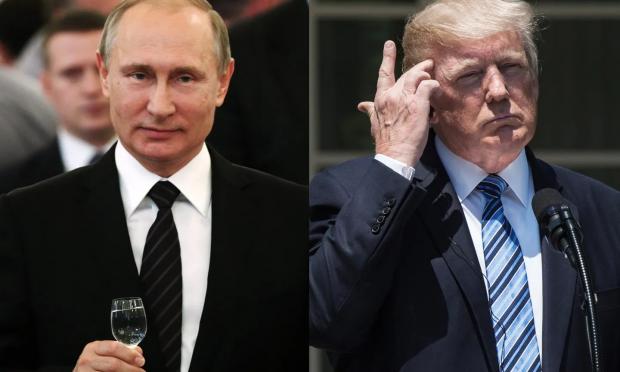There has been much talk in recent months about whether the end of the war in Ukraine will mean lasting peace in Europe or if it will just be a brief peaceful respite before Putin militarily invades another country or countries in Eastern Europe.
The intelligence services of Germany and Poland estimate that Russia will restructure its military machinery after the war in Ukraine ends, within a period of 3-5 years, and then launch a new invasion of Eastern Europe, with the Baltic countries being a primary target for Putin, or the Scandinavian peninsula.
Russia's adaptation of its industry to meet the increased defense requirements of its armed forces due to the war in Ukraine is a bad omen for Europe, as according to an international media outlet, Russia’s military spending exceeds that of Europe, which states:
Russia's military spending exceeds that of Europe overall.
Russia’s military spending is rising so quickly that it surpasses all European countries combined, despite their efforts to increase their budgets and rearm, according to the latest military balance report published by the International Institute for Strategic Studies (IISS).
The think tank stated that last year Russia’s military spending was estimated at 13.1 trillion rubles ($145.9 billion), or 6.7% of its gross domestic product, more than 40% higher compared to the previous year.
Meanwhile, Europe's total defense spending for 2024 was $457 billion, more than 50% higher in nominal terms compared to 2014 and 11.7% higher in real terms from the previous year.
But if Russia’s spending is calculated based on purchasing power parity, which is used in countries like Russia where domestic inputs are significantly cheaper than in the global market, military spending would reach $461.6 billion, according to IISS.
NATO Secretary General: "We are not prepared for what awaits us in four to five years."
The fact that Russia surpasses all of Europe in military spending is a new development, the result of its "remarkable" defense buildup and industrial reform, said Fenella McGerty, senior fellow for defense economics at IISS.
This adds credibility to concerns that Russia will be able to attack the continent once the war against Ukraine ends.
"We are not prepared for what awaits us in four to five years," NATO Secretary General Mark Rutte warned last year.
These warnings have been echoed by defense officials across Europe.
The latest comes from Denmark's intelligence service, which said this week that Russia could be ready to wage a "war" in Europe within five years.
Russia's enormous changes
The military effort has imposed enormous changes in Russia as its defense sector has been bolstered to increase production in key areas like ammunition and artillery systems required to support operations.
The country’s industrial base is now distributed throughout the economy, and the private sector is playing an increasingly important role. “We are seeing real adaptation, not just in terms of spending,” said McGerty.
Europe’s fear is that this enhanced Russian defense industrial capability could be used against the European Union and NATO.
However, Russian leader Vladimir Putin’s maneuvers in Ukraine have had a severe impact on the Russian army, even before the invasion, and there are concerns about the sustainability of Russia’s current spending.
IISS calculated that 14,000 main battle tanks, infantry fighting vehicles, and armored personnel carriers have been lost since the beginning of the war. While some have been replaced with domestically produced models, the country has also had to use "vintage" models such as the BTR-50 APCs and T-62 tanks, dating back to the 1950s.
Despite significant losses, IISS analysts expect that Russia will have the level of spending and weapon stocks necessary to continue high-loss tactics until the end of the year.
2% to 5% defense spending in European countries
Europe is increasingly trying to make up for years of reduced defense spending since the Cold War.
Last year, 24 out of 32 NATO member states achieved the alliance’s goal of spending at least 2% of GDP on defense, although U.S. President Donald Trump now wants this figure increased to 5%.
Countries close to Russia are rushing to strengthen their militaries, even if it means purchasing weapons systems from countries outside of Europe.
For example, Poland signed contracts worth $16.9 billion with South Korean arms manufacturers between February 2022 and the end of October 2024, covering everything from mobile howitzers to tanks and fighter jets.
Some countries, led by France, want European nations to spend more internally, and the EU’s spending programs should favor national industries.
Others, including Germany, Poland, and the Baltic countries, want to ensure strong security ties with the U.S. under Trump and obtain commercially available equipment their forces need.
Between mid-2022 and mid-2023, 63% of all EU defense orders went to U.S. companies and another 15% to other suppliers outside the EU, according to last year’s Draghi report, which aims to make Europe more competitive.
EU strategies
The EU is aware of this issue and is pushing member states to spend much more on defense.
European Commission President Ursula von der Leyen said last year that the bloc should consider spending an additional 500 billion euros on defense over the next decade.
Brussels is also setting up programs to strengthen the EU’s military-industrial complex.
One of the first attempts is the €1.5 billion European Defense Industry Program, although it has led to disagreements among member countries regarding how open it should be to funding arms manufacturers outside the EU.
Where are we heading?
In conclusion, although European countries are making more efforts in defense, there are concerns that these efforts are still too few.
In the east, Russia continues its concerning military buildup of forces and resources, while traditional Europe-U.S. defense ties are unraveling under Trump.
This could leave the continent alone for the first time since World War II.
Could Trump and Putin be making a new Yalta-style agreement for the redistribution of spheres of influence on the planet, with Europe as the victim?
Time will tell.



